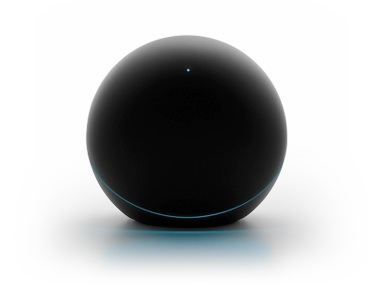It’s not often that a company decides to postpone the launch of a high-profile hardware product indefinitely just days before it’s expected to ship the first units. But that’s exactly what Google did with the Nexus Q this week. The spherical Nexus Q media streamer wasn’t just Google’s first consumer electronics hardware project that was designed completely in-house, but it was also a key product the company showcased at its I/O developer conference and put into every attendee’s swag bag. Even at I/O, though, it was already clear that Google wasn’t really sure what the Q was supposed to be and maybe that explains why the on-stage demo of the Q, which was supposed to retail for $299, was the single worst demo of I/O.
Not all is lost, though. Google says it is working on making the Q “even better.” Having used the Q for a bit after I/O and then quickly forgotten about it, I can’t help but think that postponing the launch was the best thing Google could have done. There is a lot to love about the Q, but it was nowhere close to being ready for public consumption.
Stunning Design Can’t Overcome A Lack Of Features
Here’s the problem with the Nexus Q: it’s a stunningly beautiful piece of hardware that’s being let down by the software that’s supposed to control it.
The moment you unbox the Q (at least the version Google gave away at I/O), it’s clear that this is a high-end device and once you plug it in, the glow of the 32 RGB LED lights around its perimeter just confirm that this is not some cheap plasticy consumer electronics device. The fact that there is no standard 3.5 mm headphone jack and just banana plugs, an optical out port and an HDMI connector also tells you that the Q was meant to be used with relatively high-end peripherals as well (it doesn’t have a built-in speaker, by the way). There are no obvious controls on the device itself, but the upper half rotates and functions as the volume control. With its 25W ARM Cortex-A9 CPU, the Q also has enough processing power for games and to stream 1080p video.
After you unbox and plug it in, though, it just takes two minutes to realize that Google either put so much emphasis on the hardware, it forgot what that hardware was actually supposed to do, or that the company rushed the software out to have something ready to show at I/O.
Given that the Q doesn’t have any hardware controls to speak of, you must have an Android phone to control it. To get started, you tap your phone against the Q to initialize the download. In my tests, that mostly worked, but it often took a few attempts to get going. The software itself is very barebones. Once installed, you can stream music and videos from the Q to your TV or audio setup and this works well enough. For some reason, though, Google decided that you can’t stream any music or video from your phone the way Apple’s AirPlay allows you to do. Instead, the Q needs to be connected to the Internet and only plays content from YouTube, your Google Music account and the Play store. There’s absolutely no reason for this limitation, but it’s what Google decided to do.
The least was say about the Q’s party mode, which allows everybody with an Android phone to play DJ at your party, the better. The I/O demo of this feature was awkward and using it at a party would be even more so. If you’re looking for some ammunition to claim that Google doesn’t get social, the Nexus Q “party mode” is pretty good example.
That’s all you can do with the Q Google gave away at I/O and planned to ship to paying customers. For $299, that’s significantly less functionality than what an Apple TV offers for $99.
The fact that Google decided to offer free Qs to everybody who pre-ordered one can only mean two things: Google only got so few orders that shipping them out wasn’t going to hurt the company’s bottom line, or Google plans to modify the hardware and not just the software. I doubt Google will make any major changes to the hardware (except for maybe/hopefully adding a standard headphone jack), so I’m going to assume that the Q pre-sales weren’t looking very good before the postponement and the company realized that the only way to salvage his product was to take at least parts of the experience back to the drawing board.
Making The Q Better Is All About The Software
The good thing is, thanks to this postponement, Google has given itself a second chance to get things right.
Most importantly, the Q needs to support more apps. If you are going to make a device that is meant to be hooked up to a TV, why not allow streaming from Hulu Plus, Netflix and other services? Why not add built-in support for Picasa, Flickr and other photo-sharing services? Why not add a browser, too, while you are at it? And maybe throw in a few games that use an Android phone as their controller, too. The Q runs Android and Ice Cream Sandwich, after all. With those features, the Nexus Q could compete with Apple TV – especially if Google manages to hit a lower price point with the new version – without cannibalizing Google TV sales (not like there’s much to cannibalize there in the first place given Google TV’s lethargic sales).

